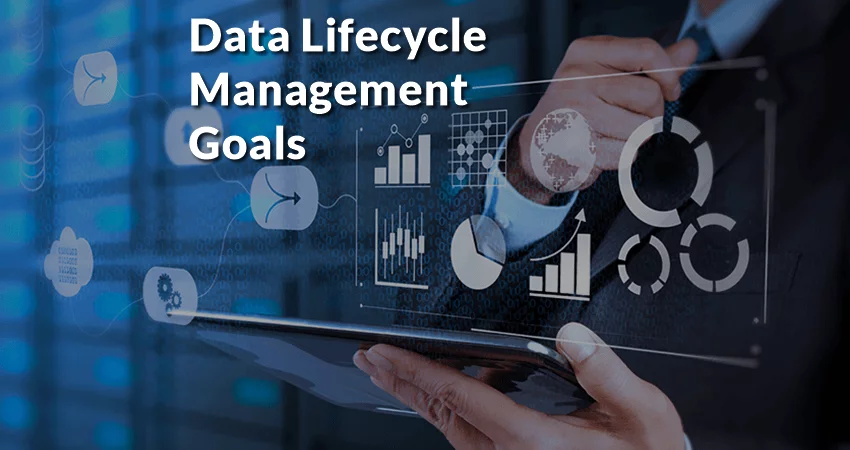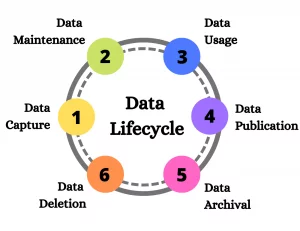With the world filled and run by data today, it is no surprise that the data lifecycle – the journey of data right from creation to deletion and everything in between – has increased significantly.
A piece of information that would be used and discarded previously is now stored for years on end, since everything today is linked, and every single part of data is a piece of a puzzle to form a big picture.
Thus, as the data increases, it is only imperative to be able to manage it properly, and hence, the need for data lifecycle management.
Data lifecycle management is the process of managing the flow of the data in an information system in its lifecycle. The need for data lifecycle management varies among industries but it has three main goals to fulfill.
Managing data is a tough task, and there are certain goals that need to be considered in data lifecycle management.
These goals are the foundation by which there is an unhindered and streamlined flow of information. The three goals are as follows:
With the massive volume of data out there and in use, the risk of data being misused is at an all-time high.
And with data being the new currency in this digital world, its security is extremely crucial to any organization and individual.
It is thus necessary to ensure data security, i.e., protecting the data from being accessed by third-party unauthorized users, as well as protecting the data against any malware or being corrupted.
Data being the driving force in the digital era, it is only fair that the data is made available whenever needed.
If the data is not available when needed, it results in cascading failures of multiple processes that are dependent on the data from the previous process.
Hence data availability holds a very high priority in processing and thus is a major goal in data lifecycle management.
As the recorded data is used in day-to-day operations, it is subject to multiple edits and revisions for every instance of it being in use.
Moreover, with the growing popularity and implementation of data-centric technologies such as cloud computing, IoT, etc. computing in multi-user environments has increased.
So, there are multiple instances of the data created and in use as multiple users access the same database. This could lead to differences in versions as seen and saved by the various users.
Thus, it is necessary for a DLM to be able to maintain data integrity, i.e., at all times, the same data should be visible to all the users, and any iteration to the data must be judiciously reflected in all instances.
As seen from the above diagram, there are six stages in the data lifecycle, ranging from creation to deletion. Let’s go through each step in brief:
Data could either be acquired from an external source or could also be from the reception of signals from various systems such as in the case of IoT systems or machine learning systems among others.
Data maintenance implies the processing of data to make it usable without deriving any value from it for the enterprise.
At this stage, the data is used for various activities such as decision-making or analysis.
Data is shared with various users who have authorized access to it. Data publication could refer to the sharing of data outside the enterprise.
The unused or unnecessary data is saved just in case it is required in any active environment in case of any direct or indirect dependencies.
Once it is established that there are no dependencies, whether direct or indirect, upon any other data in any active environment, the data can then be deleted. Ideally, the data is deleted from an archive.
Conclusion
Data has evolved to be the new currency in the digital era that we live in. Hence managing data has become an essential aspect in terms of data handling, giving rise to the concept of data lifecycle management.
All organizations big and small manage their own data, and some opt for services when storing data on the cloud. But the big picture is, no one can escape it, lest it is unsustainable in this highly competitive world.
You May Also Like to Read:
Data Abstraction Levels Explained


